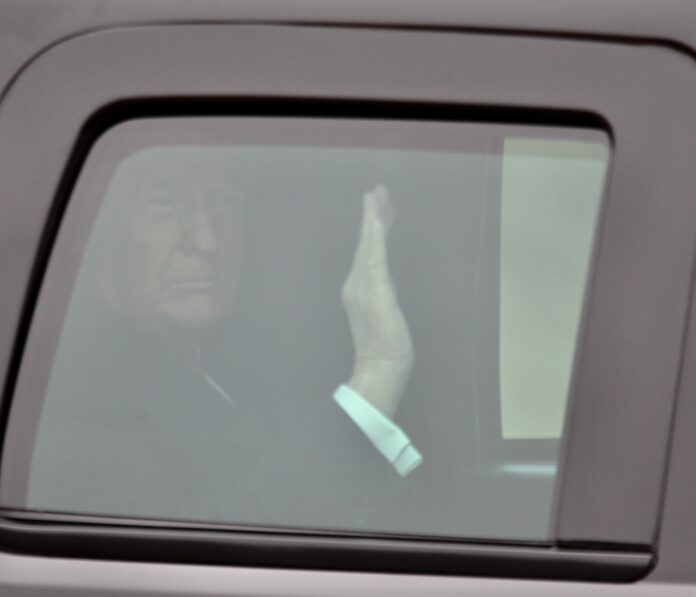
Despite calls to cancel his trip to the Rio Grande Valley, President Trump arrived Tuesday afternoon to commemorate the completion of 450 miles of border wall system between the U.S. and Mexico.
Even that landmark — 450 miles of border wall — isn’t quite what Trump or U.S. Customs and Border Protection officials have said it is. According to its own status report, CBP stated of the 452 miles completed to date, 372 miles is replacement for primary and secondary “dilapidated and/or outdated designs,” that already existed along the border — making it roughly only 80 miles of “new wall” where a wall or barrier did not exist before along the U.S.-Mexico border.
Valley native and associate law professor at the University of Denver, César Cuauhtémoc García Hernández, who specializes in immigration said it’s apropos and also ironic in ways that Trump would visit the border region in his last days as president.
“Trump launched himself into prominence by promising to build, in his words, a beautiful wall; and sealing off the United States from Mexico the rest of Latin America. And so it only makes sense that he would want to spend the last week essentially of his presidency visiting the symbol that turned him from a reality TV star into the president of the United States of America,” García said.
VALLEY PERCEPTION
García said an issue that has been underscored in the last four years — specifically with using the Valley as the backdrop for rhetoric revolving around border security — is that it leaves an impression around the world of the Valley as a lawless place — an extreme juxtaposition to what the region really is like.
“The Valley is of course, a vibrant, culturally rich region, which like every other part of the United States and indeed of the world, has its own set of problems, some of which are unique to the region, some of which are common in communities across the country,” García said.
But since he began campaigning to become president in 2015 — Trump has used border regions as the example of a lawless land.
“I think one of the constant headaches that those of us who are intimately familiar with the Valley encounter, is that it is presented as a unidimensional way. The only thing is the rest of the country, and I think the rest of the world hears about the Valley, is the difficulty of ensuring that no one and nothing comes across the border with Mexico, that does not have the federal government’s permission,” the Valley native said. “But what people in the Valley know, of course, that crossing the border isn’t simply an afterthought for families and businesses in the region, it’s essential. It’s at the core of what makes this such a vibrant community and has for generations long before politicians, whether it’s in Washington or in Austin, decided that crossing the border was a threat that needed to be policed.
“(Trump’s) visit (Tuesday) falls very neatly into the tradition of politicians who present the Valley as being the site of a security lapse.”
LEGACY
The associate law professor said it is ironic that Trump would come to the area along the border that was the area in which it was most difficult to procure land for the promise of a wall due to the large number of Valley residents who own property along the river.
“Because so much of the riverfront property is held by private landowners, who have absolutely no interest in giving it up to the federal government, in many instances (the land) has been in their families for generations, and it is not just a piece of property…for many of the people in the Valley who own property along the river, it is a part of their families’ lore, and it’s a part of their claim to being a member of this community,” he said.
He said, ultimately, it’s the people who live in this region who are hurt most by Trump’s rhetoric and his use of the area for political points.
“Trump weaponized the border wall, just like he weaponized the border, itself. I think the people who live closest to the border, the people who understand the border, and all of its nuance and all of its intricacies — its beauty, but also its harsh dimensions, are the people who stand the most to lose when somebody decides to turn the border into the symbol of hatred and division,” García said. “…But it’s the people who are most invested in making sure that the border itself is represented in its fullness and its richness, that in fact symbolize the people of the Valley…”



